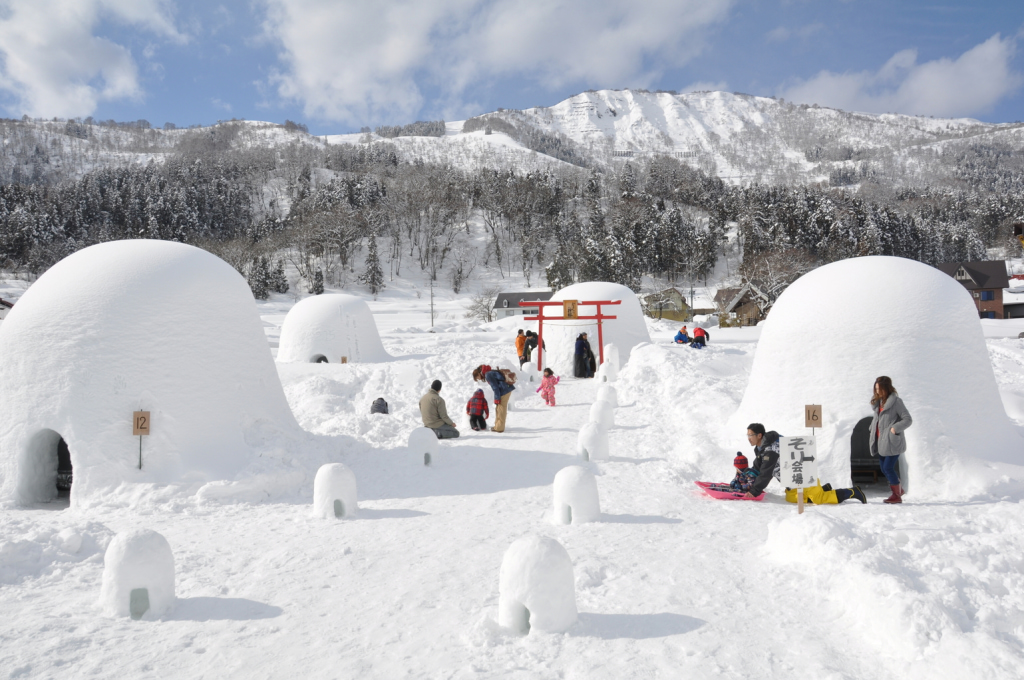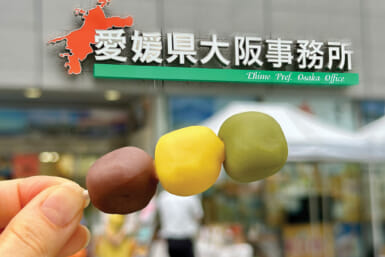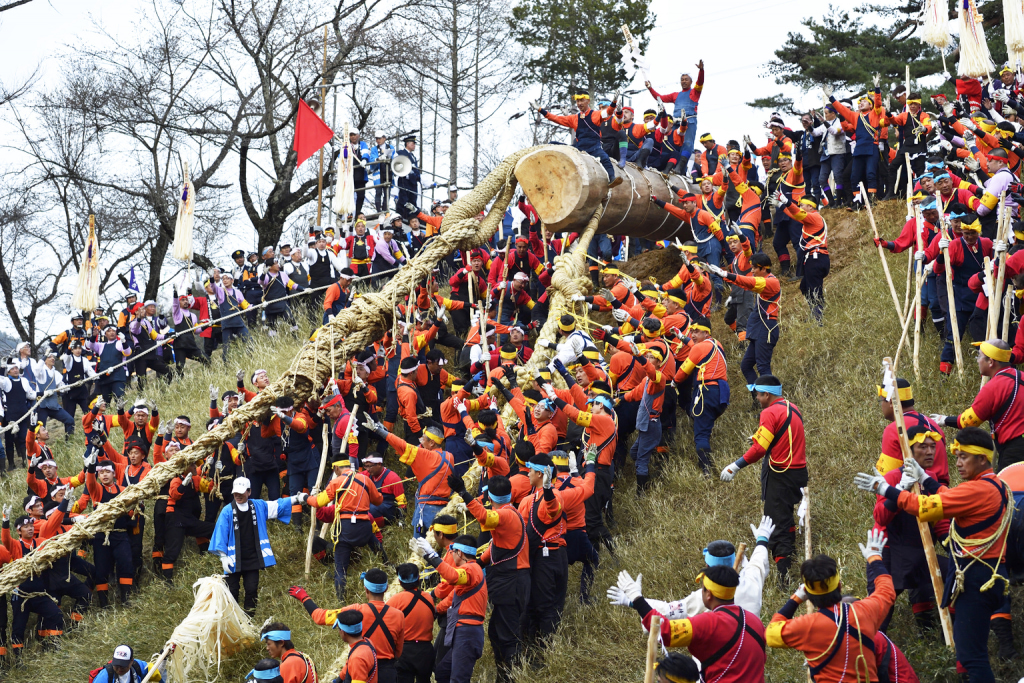
Onbashira Festival (Photo from the 2016 event)
Must-dos
1. One of the oldest castles in Japan, Matsumoto Castle, is sure to make you feel like you’re following in the footsteps of an honorable samurai. The structure is one of the few of its kind to be designated a National Treasure.
2. Nagano is first and foremost known for its slopes. Whether you’re a novice or pro skier, Hakuba remains one of the top destinations to experience Japan’s world-class snow.
3. If your schedule allows, definitely make time to check out the Iiyama Snow Festival in the deep Japanese Alps, held annually in February.
4. Pay a visit to Nagano’s snow monkeys (Japanese macaques), who hang out in the natural sources of Jigokudani Yaen Koen in the winter to keep themselves warm.
5. Definitely attend the Onbashira Festival, one of Japan’s most dangerous festivals for participants (it is completely safe for spectators), that takes place every six years.
6. Togakushi Shrine is one of Nagano’s most important shrines. Walking down its path of monolithic cedar trees is humbling and a rare experience.
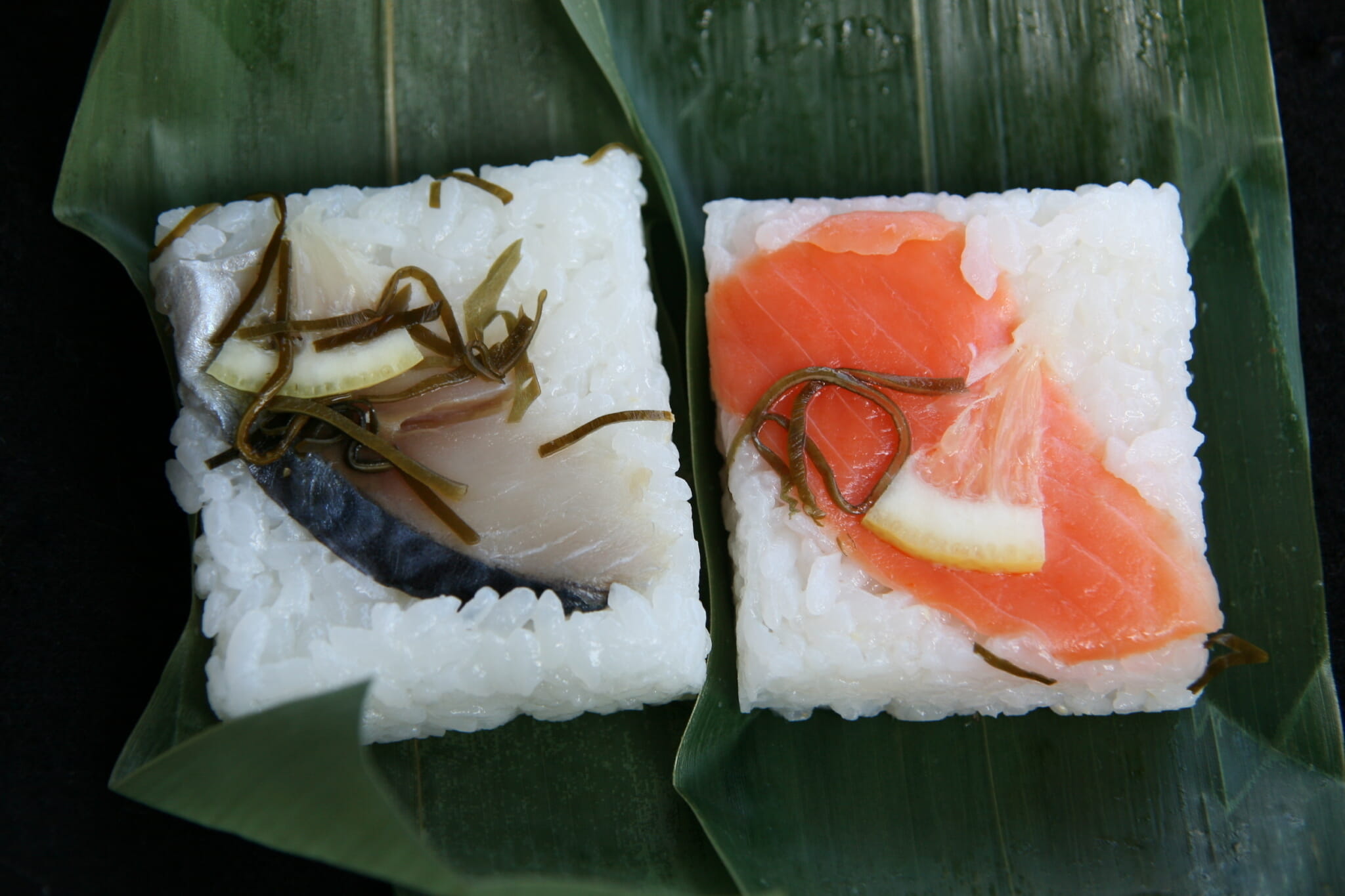
Sasazushi
Food and Drink
Must-try Delicacies
7. Oyaki is a traditional Nagano food, sometimes described as a dumpling, though it’s more of a big bun. Stuffed with vegetables, it’s especially delicious after a long day outside in the winter.
8. Another specialty is sasazushi, a type of sushi that is pressed and topped with edible wild vegetables and miso paste along with other smaller ingredients, all wrapped in a bamboo leaf.
9. Head to Iiyama for a hyper-local sweet treat called a banana boat, which is a banana wrapped in whipped cream and sponge cake. Note: There are only a few select shops where you can pick up authentic banana boats.
10. Nagano is one of Japan’s leading regions when it comes to domestic wine. Be sure to ask restaurant staff wherever you dine for local labels and recommendations.
11. Learn more about the cultivation of wasabi at Japan’s largest wasabi farm, Daio.
Recommended Eateries
12. En Boca in Karuizawa is a specialized Italian restaurant known for its pizza, as well as its wide variety of Belgian beers and European wine.
13. Another Karuizawa recommendation is French Bakery, which is famous for having served John Lennon, who reportedly absolutely loved the bread there.
14. Coffee aficionados will enjoy the Kyu-Karuizawa Mikado Coffee store. Enjoy everything from a simple cup of black coffee to coffee jelly topped with soft-serve ice cream.
15. For a truly unique eating experience, head to Takasugi for a hot beverage and some sweets at the flying mud boat tea houses.
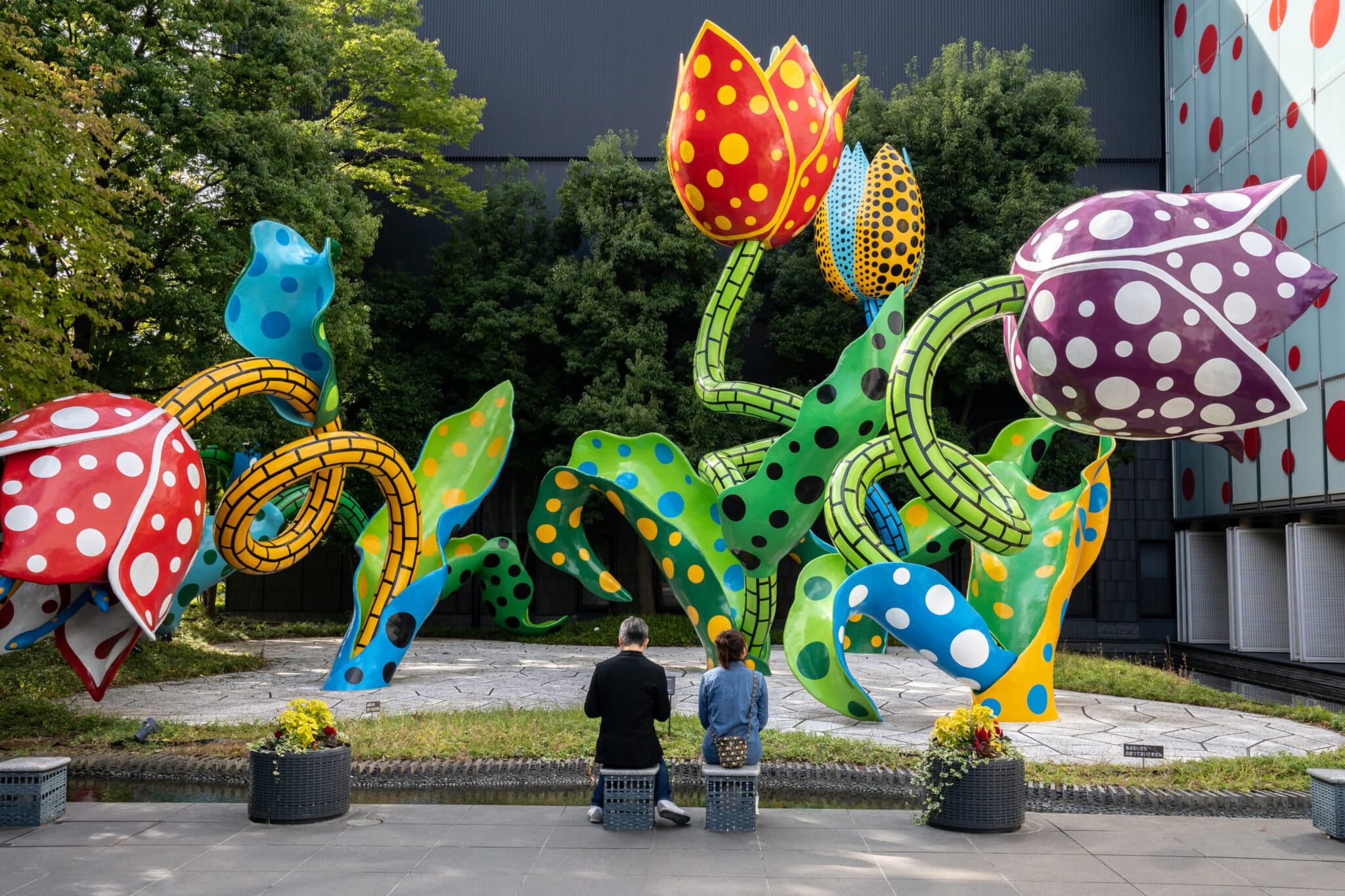
Matsumoto City Museum of Art | Photo by Suthikait Teerawattanaphan via Shutterstock
Art and Culture
Window Shopping
16. For a blast from the past, walk around the Kyu-Karuizawa district. You’ll find cafés, small eateries and a few ceramic shops. Keep your eyes peeled for a milk vending machine too.
17. Shop and stroll through Harunire Terrace in Karuizawa.
18. Feel like splurging? Check out the Karuizawa Prince Outlet Shopping Plaza. In the summer, the mall’s green open space welcomes food trucks that serve a wide variety of fares.
Must-visit Museums
19. Even if you’re familiar with Hiroshi Senju‘s work, his eponymous museum is worth a visit for its architecture and garden alone. The Japanese painter is best known for his nature-inspired works, especially his dreamy depictions of waterfalls.
20. For more contemporary art, be sure to add the Sezon Museum of Modern Art to your itinerary, also in Karuizawa.
21. The Nagano Prefectural Art Museum is best known for its calligraphy exhibitions, often featuring Japanese artists from the early 20th century.
22. Immerse yourself in all things Winter Olympics at the Nagano Olympic Museum.
23. Perhaps most recognizable by its Yayoi Kusama facade, the Matsumoto City Museum of Art is a great one-stop shop for all things art if you’ve only got room for one museum on your trip.
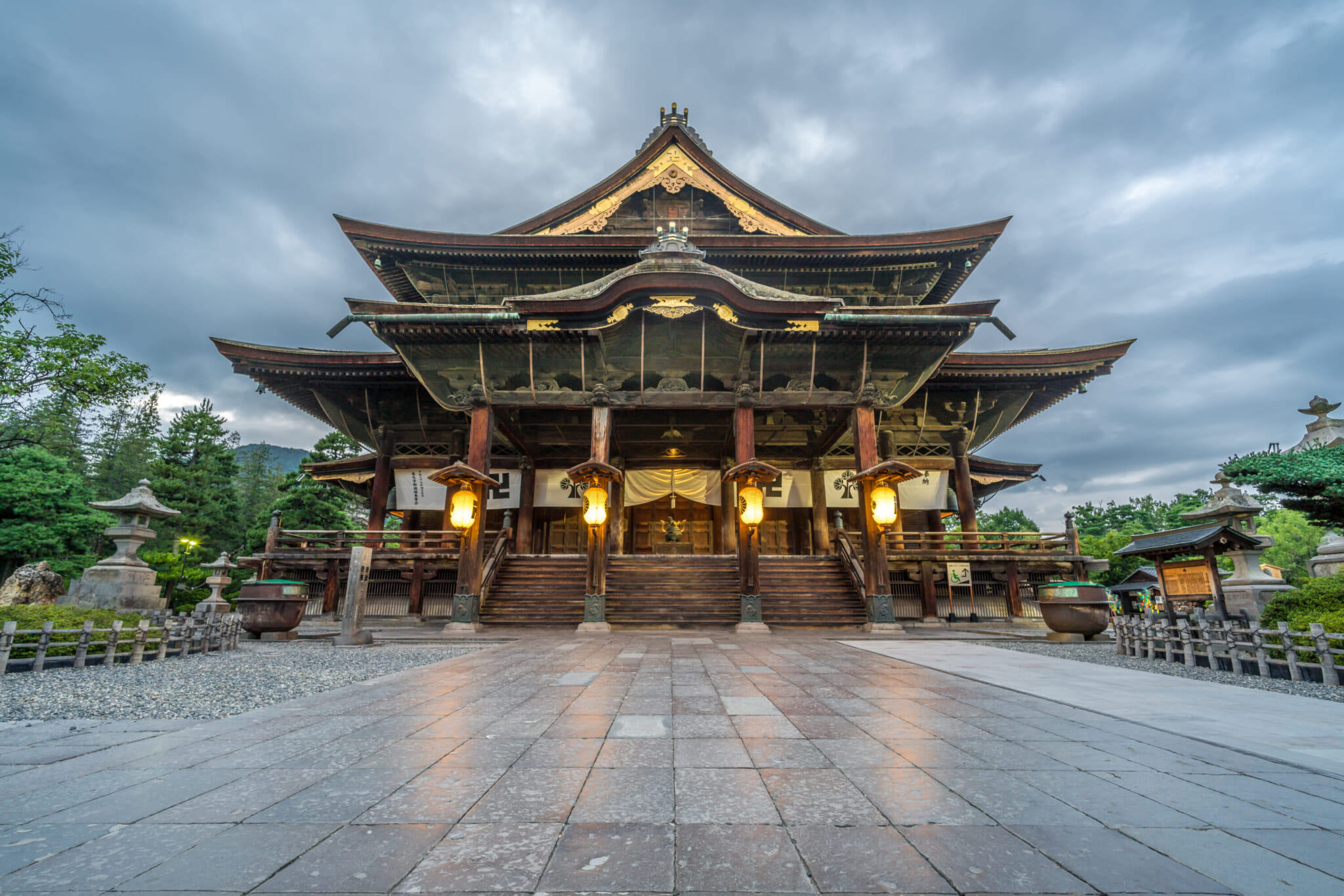
Zenkoji Temple in Nagano Prefecture
Shrines and Temples
24. Located not too far from central Nagano, Zenkoji Temple is a Buddhist temple founded in 642. It’s also one of the few temples in the prefecture that allow shukubo, or temple stays, for those who want to completely immerse themselves in this spiritual environment.
25. Those who are not afraid of heights should visit Shakusonji Temple, built on the side of a steep cliff on Mount Asama.
26. A more modest place but beautiful nonetheless is Suwa Shrine.
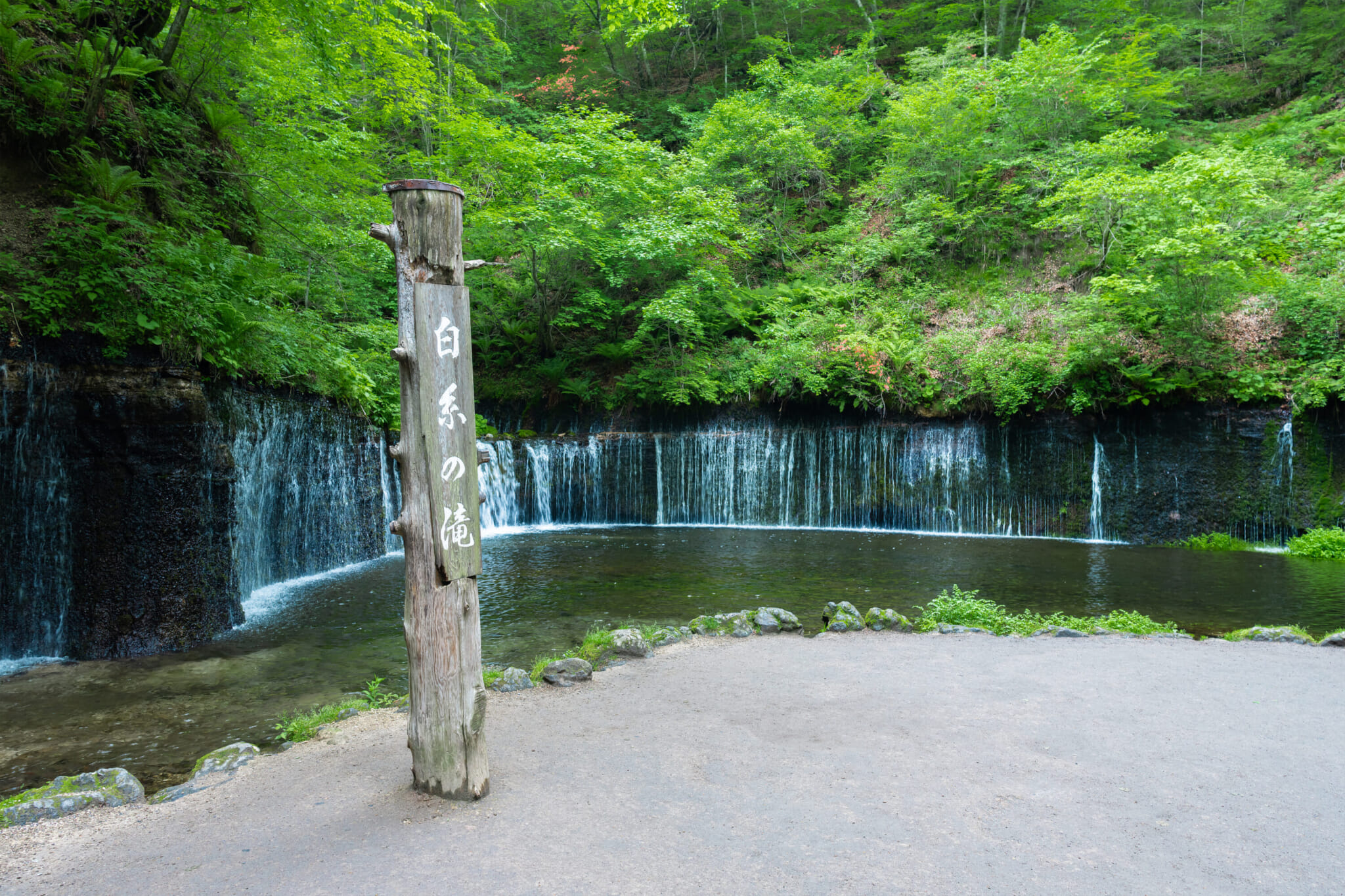
Shiraito Waterfall in Karuizawa, Nagano Prefecture
Nature and Scenery
Nature Views
27. Somewhat deep into the forests of Karuizawa is Shiraito, a gorgeous waterfall that’s 3 meters high and 70 meters wide. Some of the works exhibited at the Hiroshi Senju Museum were inspired by Shiraito.
28. Another spot for forest bathing is the Karuizawa Lake Garden, where you can see a variety of colorful flowers blooming in the spring and summer.
29. Lake Suwa is one of Nagano’s most well-known sights in the winter and summer. Fun fact: Katsushika Hokusai featured Lake Suwa in his “Thirty-six views of Mount Fuji” series.
30. Many associate Nagano with mountains, but the prefecture has a few plains too. Head to Utsukushigahara for breathtaking views of flat lands, among which live a few herds of friendly cattle.
31. If you’re visiting in the spring, make some time for peach and apricot blossom viewing.
Recommended Hikes
32. Kamikochi is a favorite among hikers for good reason. Located in the Chubu Sangaku National Park, the area has beautiful ponds, wildlife and a few trails catered to novice and advanced hikers.
33. Myoko-Togakushi Renzan National Park is another great hiking destination and alternative to Kamikochi.
34. Situated at 2,060 meters above sea level, Happo Pond is a beautiful, secluded spot where, on a clear day, you can see Mount Fuji in the distance.
35. Achi is frequently quoted as the best spot for stargazing in Japan. Located in the Southern Alps, this stop is a must if you want a crystal-clear view of the night sky.
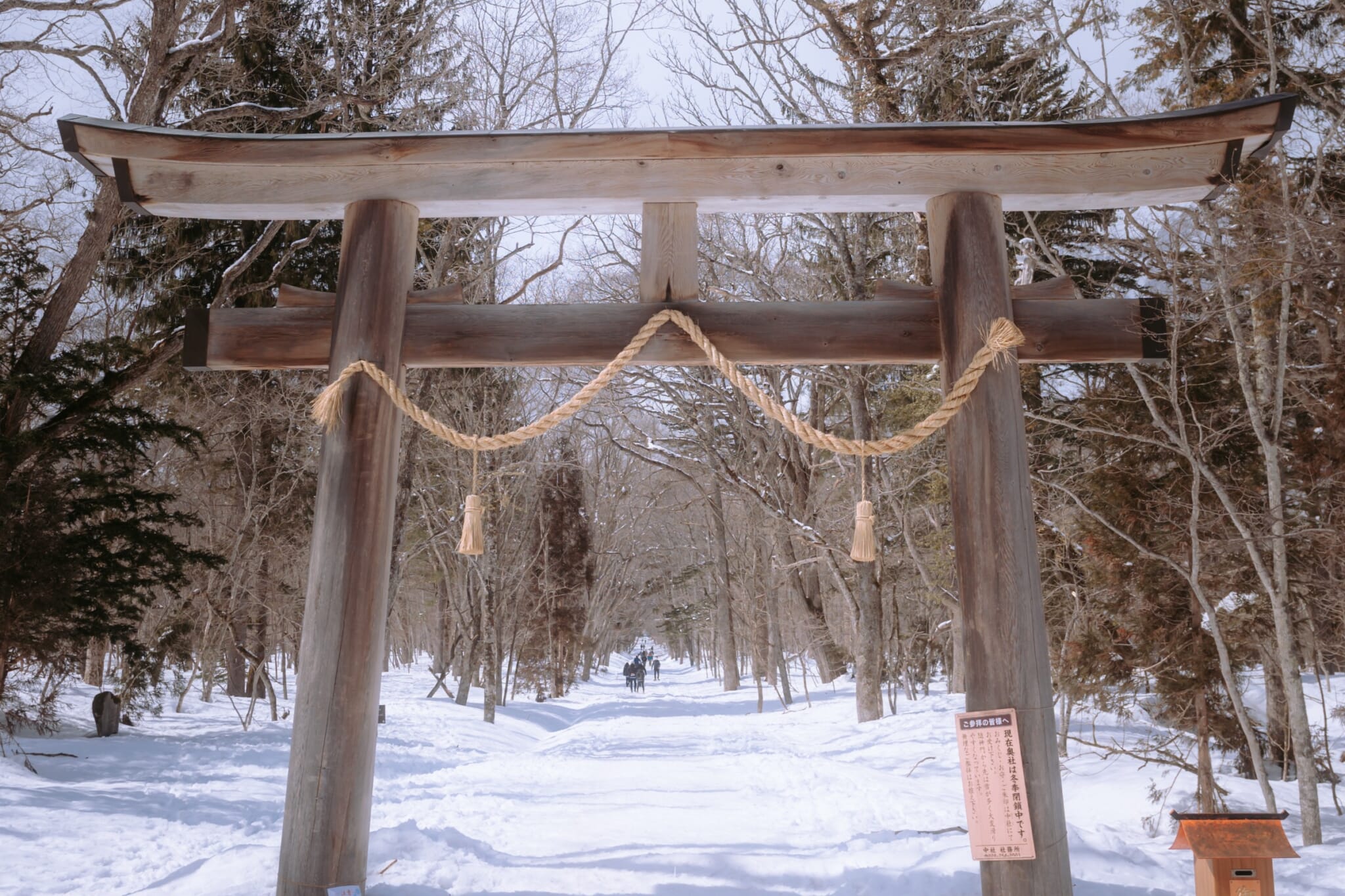
Photo by Lisa Knight
Superb Ski Resorts
36. Go down the same ski slopes as the 1998 Olympians did at Japan’s largest ski resort, Shiga Kogen.
37. Nozawa Onsen, in addition to having great baths, is also a great place for skiing and other winter sports, as well as summer activities.
38. Founded in the early 20th century, Myoko Kogen is Japan’s first international winter resort and is said to be one of the oldest in the world. It’s technically in Niigata, but borders Nagano Prefecture.
39. If you’re arriving via Matsumoto, the most accessible ski resort is Norikura Kogen. The road that leads to Norikura Kogen is the longest in Japan.
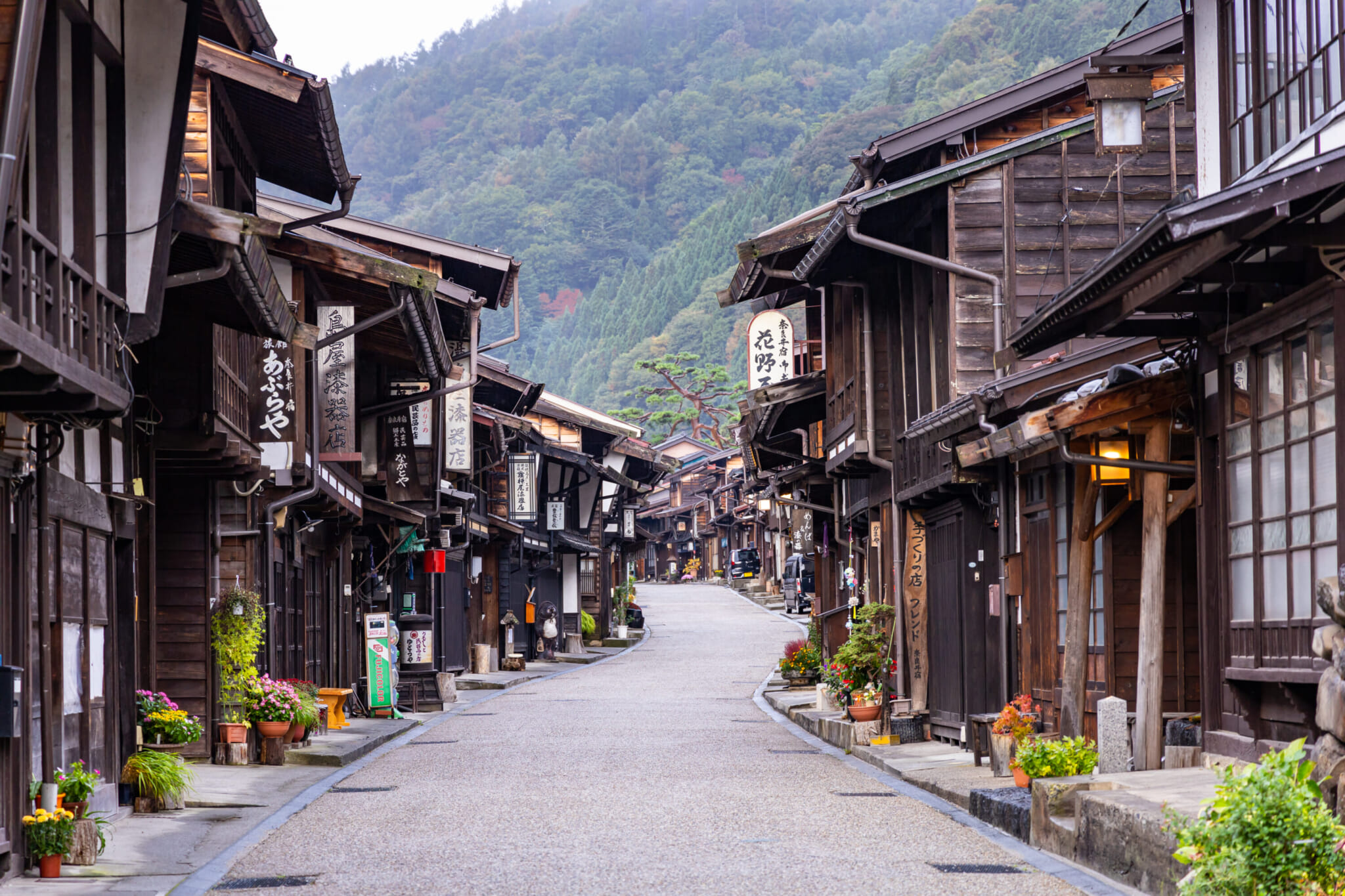
Narai, a stop along the Nakasendo Trail, Nagano Prefecture
Miscellaneous
40. Nagano has some historical onsen villages. Yudanaka and Shibu Onsen are both well worth the detour if you’re keen to relax after a long day of exploring.
41. Part of the Nakasendo Trail stretches through Nagano. It would be a mistake to miss out on checking a few stops along the famous road when in the prefecture.
42. Check out one of Concrete‘s nightlife events in Hakuba.
43. If you’re planning a road trip, drive along the Venus Line for stunning Nagano landscapes.
44. Forage around Lake Nojiri, which is said to have approximately 6,000 varieties of mushrooms nearby.
45. Catch fireworks in Suwa. This Nagano city is known for having shows every night between the end of July and early September.
46. For families traveling with children, the Togakushi Ninja Museum is well worth a visit.
All-star Accommodations
47. One of the newer resorts in Karuizawa, Hotel Indigo Karuizawa is a luxury accommodation with an interior design inspired by Nagano’s nature and culture.
48. Another hotel that’s great for special occasions is The Hiramatsu Karuizawa Miyota. Surround yourself with nature and relax, away from the hustle and bustle of city life.
49. Located in Kamiminochi, Lamp is a boutique resort that is famous for its saunas and its communal spirit.
50. Book a stay at Matsumoto Jujo, a hotel with an adjacent café, bar, restaurant and more. The accommodation is run from a fully renovated inn that first opened in 1686.

